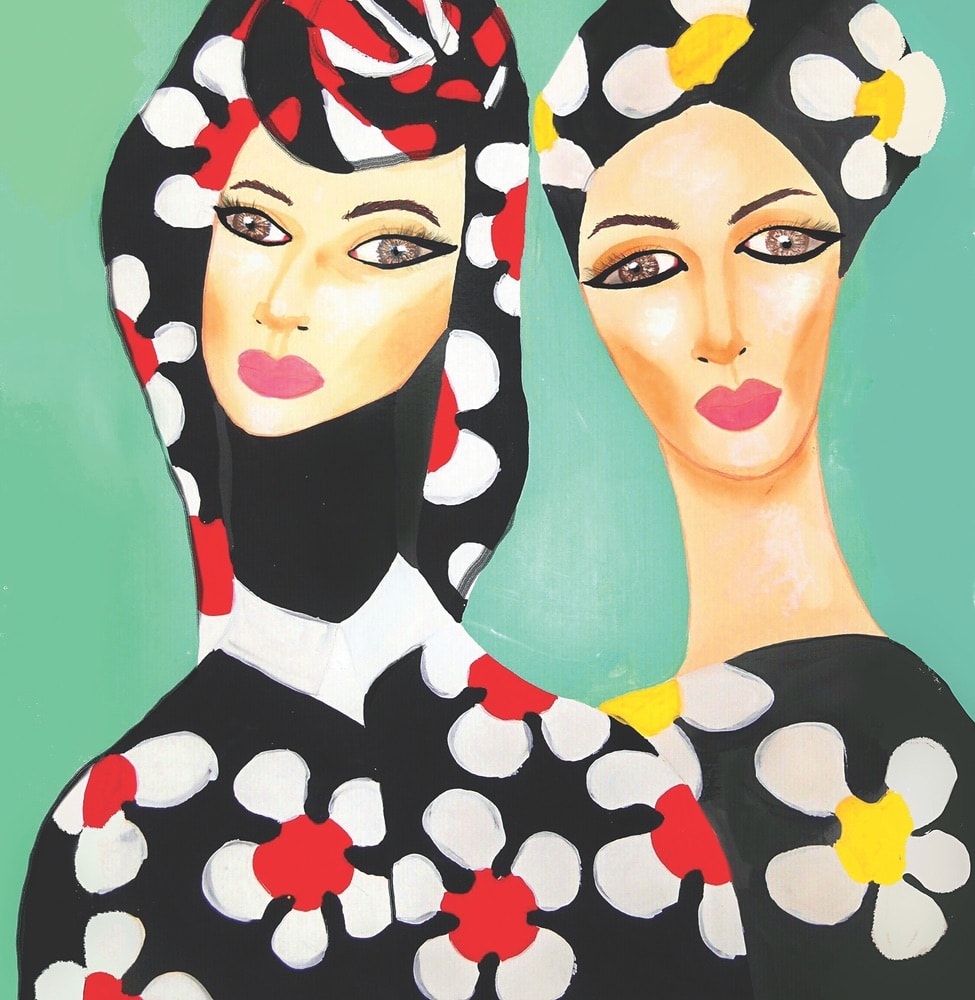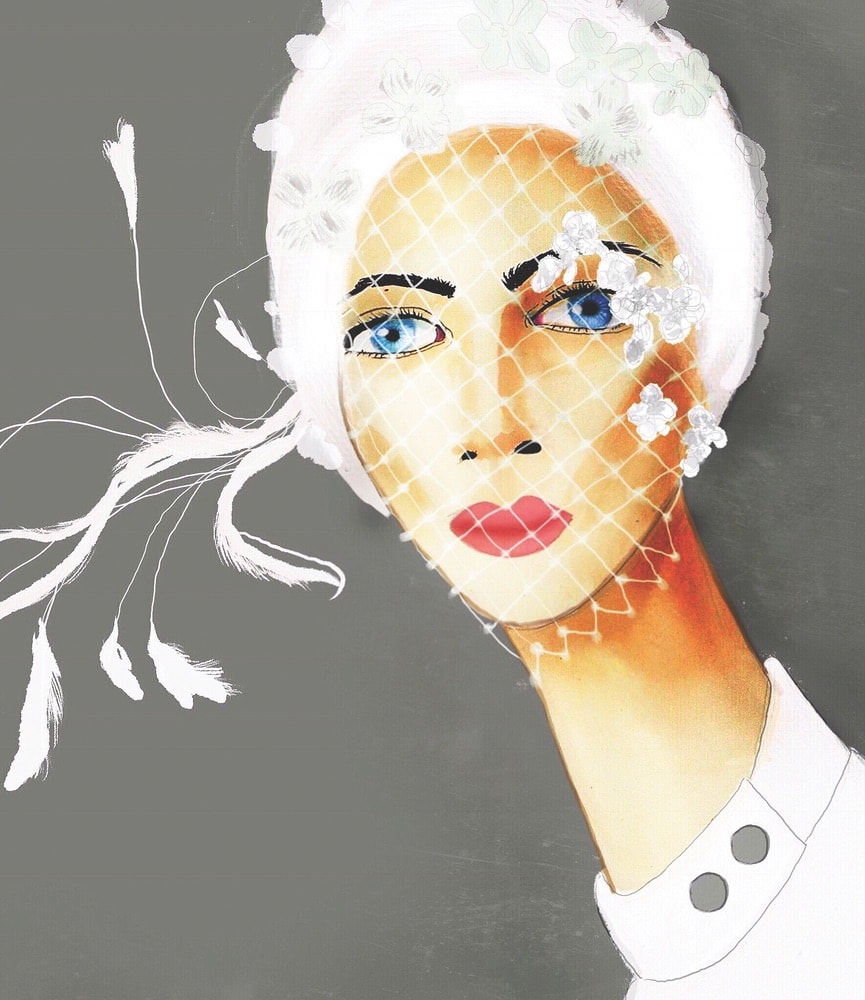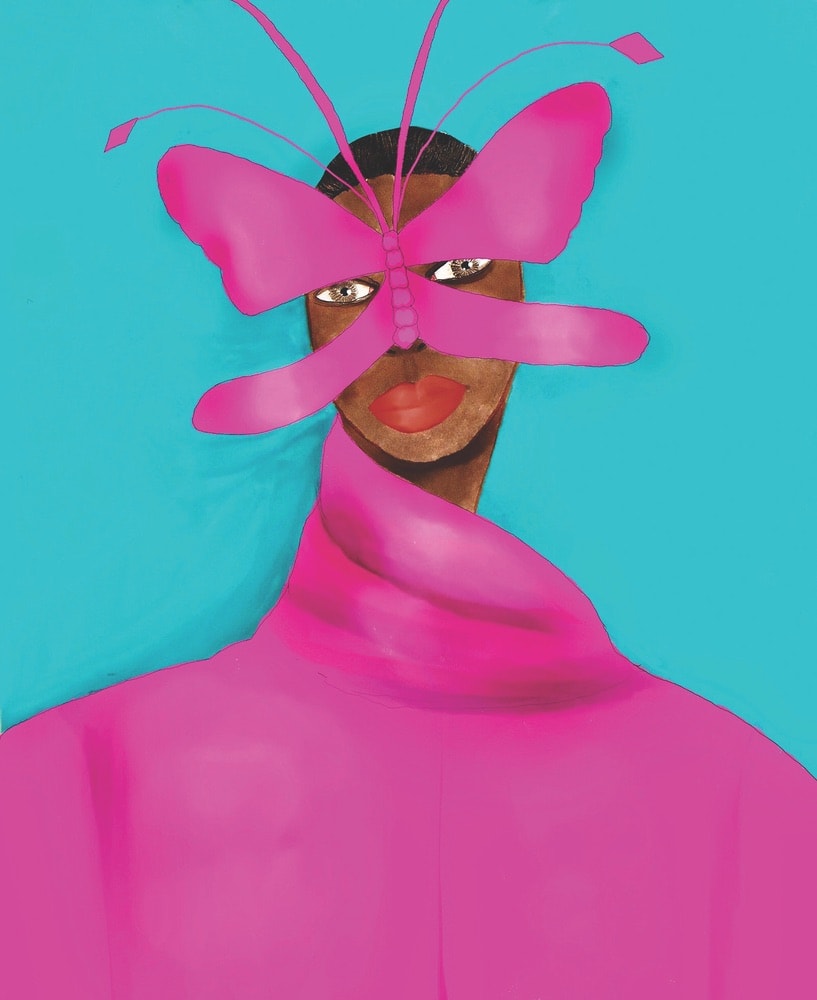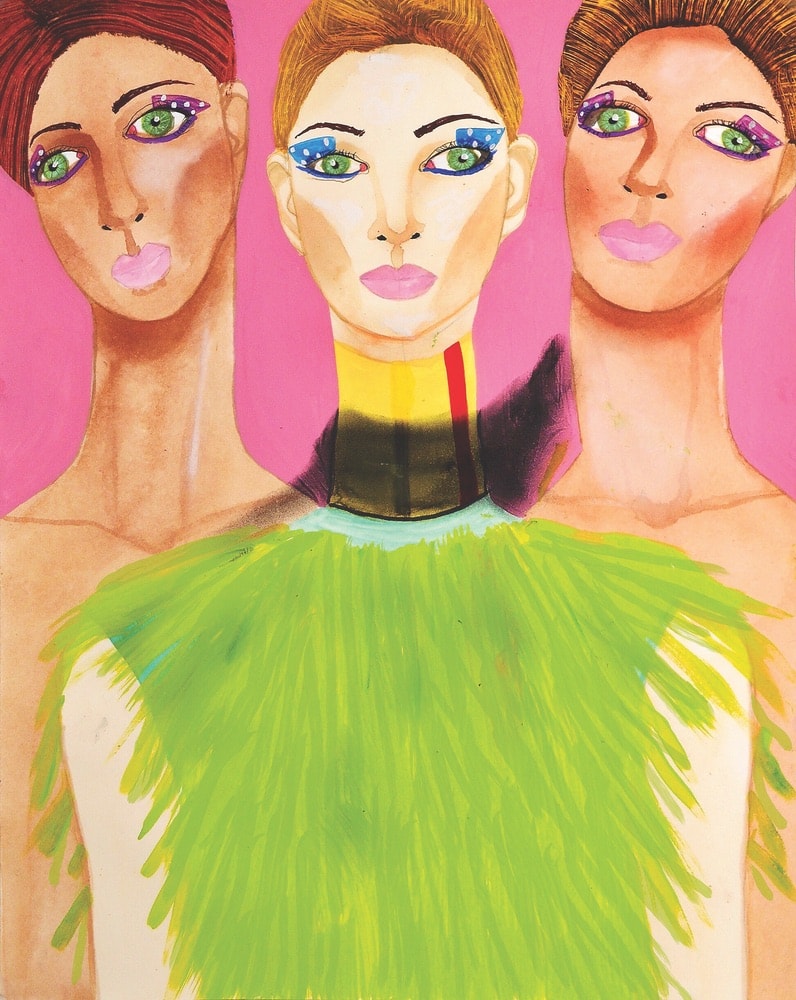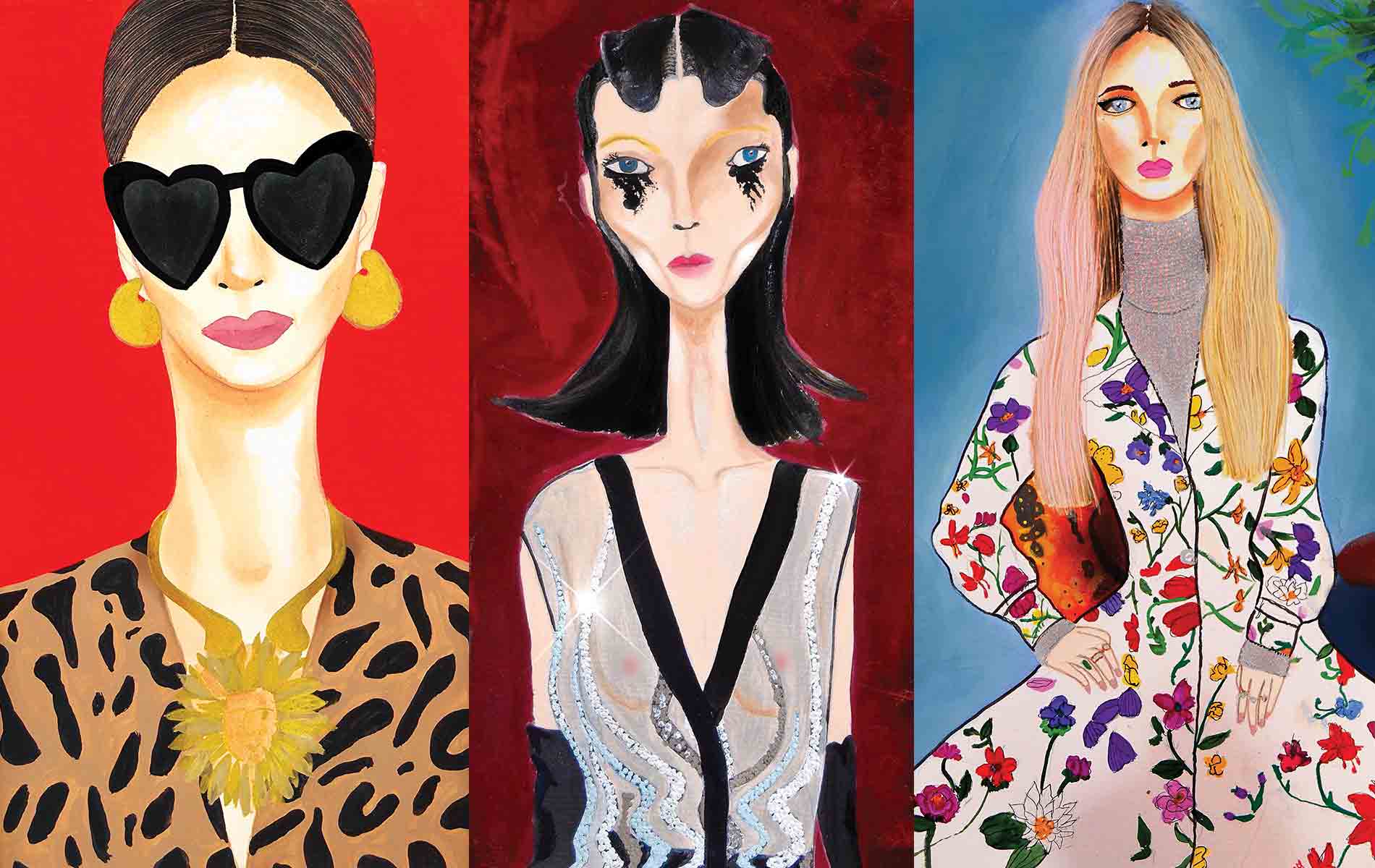
vie-magazine-vin-servillon-art-hero-min
My Favorite Color Is Animalia, portrait of Giovanna Battaglia Engelbert, Look by Marc Jacobs, Fall/Winter 2016, In Full Bloom, portrait of Dakota Fanning wearing Gucci
The Beauty of Imperfection
Art Is the Healer
By Tori Phelps | Art by Vin Servillon
Becoming a successful artist requires equal parts talent, perseverance, and luck. Vin Servillon knows that better than most. His meteoric rise to fashion industry art darling came about despite active discouragement from his family, no formal art education, and, at times, a crippling battle with anxiety and depression.
Talent, perseverance, and luck were all he had. But they were enough.
Born to a Japanese mother and Filipino father, Servillon learned early to hide his burgeoning interest in art from parents who saw no value in it. He still vividly recalls the first picture he created—a giraffe—using yellow and brown markers for the animal and lime green for the grass. He proudly presented it to his mother, thinking she would display it in the house; instead, he later found it in the garbage. Decades later he still remembers that day because it taught him two lessons: to keep his art hidden and that his parents wouldn’t support any aspirations he had outside their traditionalist plans.
From then on, Servillon stashed his work under his bed inside an old Monopoly game box. Making art was an instant escape from his difficult childhood, as worlds of his own creation opened up before his eyes. “Painting made me feel like those worlds weren’t so far away after all,” he says.
His father, a hard-charging businessman who lives in Asia, tried to mold his son into a younger version of himself. Trying to please him, Servillon attended business school and ended up working in advertising. He summoned the courage to turn down a job working for his father, but still spent years chasing approval in careers that didn’t fulfill him.
- Looks by Marc Jacobs, Spring/Summer 2018
- A Royal Wedding Salute
Then, one winter day, Servillon found himself staring out the window at bare trees casting shadows in the dim December light. Inspired, he picked up a pencil and started to sketch again. Exhilaration and peace washed over him like rain in the desert, and he knew immediately that he badly needed a course correction for his life. He finally chose art. “It felt natural to me,” he says of the decision to launch a full-time painting career. “I was that kid again—the one who made the giraffe on his bedroom floor.”
Knowing it was the right thing to do, however, didn’t quiet his old demons. Plagued with doubts about whether he was any good and fairly sure no one would appreciate his aesthetic, Servillon fell back into a pattern of keeping his art hidden. It might have gone on that way indefinitely had he not attended a fall fashion show by powerhouse Marc Jacobs. His imagination stirred to life, Servillon went home and painted one of the looks he had seen on the runway. In a remarkable act of bravery, he posted it on Instagram. Looking back, he doesn’t know which was scarier: letting his fifty-three Instagram followers see his art or daring to tag Marc Jacobs in the post.
Looking back, he doesn’t know which was scarier: letting his fifty-three Instagram followers see his art or daring to tag Marc Jacobs in the post.
When he checked the post several days later, he found that he had not only gained a lot of new followers but that both Marc Jacobs the designer and Marc Jacobs the brand had left heartening comments. The company also reposted his art to its Tumblr, Instagram, and Twitter accounts and, later, sent Servillon a little memento. He returned the favor by gifting the painting to the Marc Jacobs offices.
Just like that, Servillon was in vogue with the tastemakers.
Fashion and brand influencers started following him in droves, including makeup icon Pat McGrath, who pushed him to paint more and to believe in his aesthetic. It was a surreal experience for someone who had never received positive reinforcement from the people closest to him, and he thrived on the responses.
The more feedback Servillon received, the more he painted. And the more he painted, the more he posted. Social media followers, art collectors, labels—they all wanted to be part of what he was building. To his amazement, the public seemed to “get” his unconventional take on people and objects, which highlights the beauty that lies outside of perfection. “I can paint in the more realistic realm, and I have done so, but it just wasn’t me,” he says. “I’ve never really been attracted to the idea of perfection.”
The idea of perfection is such an anathema to him that Servillon even leaves accidental imperfections in his work, such as a shaky line or an ink bleed. And he intentionally adds “flaws” as symbols of characteristics he admires, like elongated necks on women to represent strength.
- Look by Schiaparelli
- Looks by Prada, Fall/Winter 2018
Women, painted with both power and delicacy, are frequent subjects for Servillon. It’s an expression of his love, respect, and admiration for them—not to mention it’s a subject he knows well. Growing up, he was surrounded by women, and today his best friends are women. He also says that the strongest human beings he knows are his grandmother and mother, with whom he now shares a mutually supportive relationship. “Painting women has saved me from my own demons,” he says. “I’ve learned to be a better man by painting women.”
He’s learned to be a better painter, too. Servillon never went to art school and admits that most of the time he doesn’t know if he’s using what experts would call the “right” brush for his work. He navigates strictly by emotion, mixing paint colors and choosing art tools instinctively. His technique, just like his style, isn’t for everyone, but he tries not to get caught up in the expectations of others anymore. When he needs a shot of resolve, he glances at a Rembrandt quote that’s hanging near his painting table: “Of course you will say that I ought to be practical and ought to try and paint the way they want me to paint. Well, I will tell you a secret. I have tried, and I have tried very hard, but I can’t do it. I just can’t do it! And that is why I am just a little crazy.”
The quote not only confirms that following his muse on canvas is okay, but it also reminds him that sometimes great artists and not-so-great mental health go hand in hand.
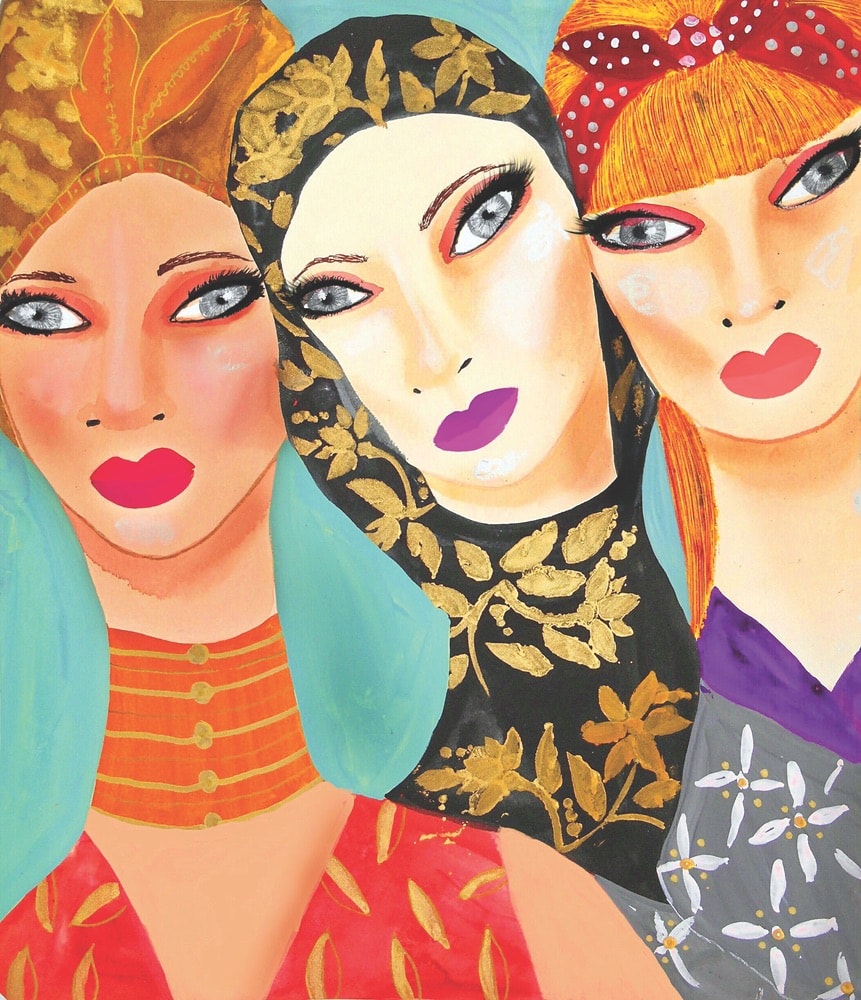
Women in Scarves
Servillon is open about his struggle with severe panic attacks and depression. The panic attacks, which he describes as “drowning in an ocean of fear,” started years ago, very unexpectedly, and just kept coming. After one scary attack while he was driving the 405 in California, he knew he needed to get help. It was a particularly daunting idea for him because mental health issues are taboo in Asian culture, and he worried about disappointing his parents. But he asked for help anyway.
Today, he has far more good days than bad, and he’s using that experience to encourage others to take action for their mental health. He knows it’s not as easy as telling someone to “get help,” though. Running into dismissive attitudes is common (he was told once to “snap out of it”), and the continued stigma surrounding mental health issues prevents many people from receiving the life-changing assistance they need. He believes that driving societal change starts with dismantling the idea that people affected by mental health issues are weak or innately flawed and replacing that fable with the truth. One of those truths, Servillon has learned, is that naming the disorder can be liberating—and the first step to regaining power over it.
Part of going public with his story involves describing what it feels like to live with anxiety and depression as a way to help those who aren’t familiar with the conditions better understand their impact. Servillon says depression, for example, is about much more than being sad. For him, it’s an exhausting battle between the light and the dark. And perhaps worst of all for the vibrant CrossFit enthusiast, depression drains every last bit of energy from his body. Fortunately, art is always there for him. “I’ve found the everyday process of painting and creating to be very therapeutic,” he says. “The determination to keep creating has gotten me through a lot of really bad days.”
“I’ve found the everyday process of painting and creating to be very therapeutic,” he says. “The determination to keep creating has gotten me through a lot of really bad days.”
It’s no coincidence that rediscovering art dovetailed with Servillon becoming emotionally healthier. He even credits it with saving his life. He was admittedly in a dark place when he started painting again several years ago, and art provides him with a purpose for both his life and his career. One of his greatest joys is connecting with people from around the globe, many of whom comment that his work inspires them. The always-humble artist insists it’s hard to believe that he inspires anyone, and yet he values those messages deeply, confessing that they’re worth more than any amount of money to him.
He’d love to reach an even wider audience by forging new partnerships with fashion houses, a burgeoning trend that pairs an artist’s creativity with a brand’s vision. There’s plenty of time for the right collaboration to come along because Servillon plans to paint until he can no longer pick up a brush. His lifestyle might bring many others to their knees if they lived it—he forgets to eat when absorbed in his work and rarely gets a full night’s sleep thanks to the images floating through his mind—but it doesn’t bother him. “I don’t want it to change,” he insists. “I start my day with a cup of strong coffee and a big smile on my face as I sit in my New York City apartment to paint. I couldn’t ask for more.”
— V —
Visit VinServillon.com and follow Servillon on Instagram (@findvin) to learn more and see more of his work.
Tori Phelps has been a writer and editor for nearly twenty years. A publishing industry veteran and longtime VIE collaborator, Phelps lives with three kids, two cats, and one husband in Charleston, South Carolina.
Share This Story!
KEEP UP WITH THE LATEST STORIES FROM VIE



